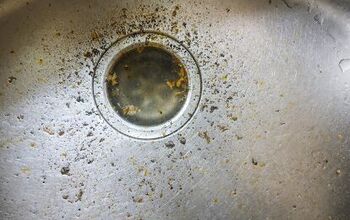How To Hook Up A Portable Dishwasher To A Pull-Out Faucet

Generally speaking, the dishwashers that we are most familiar with are installed near a sink as part of the cabinetry. But not all homes are designed to handle those built-in dishwashers that we are all familiar with.
There are portable dishwashers that can be rolled into position and used with a pull-out faucet. This guide will show you what you need to know to get the proper connection so that your dishes can get clean while returning the used water to the drain in your sink.
Do You Need to Hire a Plumber?
Get free, zero-commitment quotes from pro contractors near you.

Why Portable Dishwashers?
Some homes, generally older homes, may not be properly equipped to accommodate the built-in dishwashers that we all know about. These units are permanently connected to the rest of the home’s plumbing and remain stationary, generally near the kitchen sink.
A portable dishwasher is something that can be hooked up to the pull-out faucet in your sink so that you can get the performance of a traditional dishwasher without having it tied into your home’s plumbing system.
Portable dishwashers can be stored out of the way for later use, allowing for space-saving as well.
Step 1: Loosen the Aerator
The first step in the process is to loosen the aerator. This is connected to the spout of your kitchen sink. You should be able to loosen it by hand, but a pair of pliers will work in a pinch. When you have successfully unscrewed the aerator, store it in a safe and accessible place for later use. A good idea is to put it into a plastic storage bag and label it so that there is no confusion later on.
Step 2: Screw in the Special Faucet Adaptor
When you purchase your portable dishwasher, there should be a special faucet adaptor that comes with it. This is what allows you to connect to your home’s kitchen faucet, facilitating the running of the portable dishwasher.
Screw the adaptor over top of the threaded faucet spout. If it doesn’t fit snugly and securely, check both ends of the connection to ensure that there is stripping. If you notice stripping or damage to the adaptor, check with the manufacturer to see if it can be replaced by them.
When you’ve successfully screwed the adaptor into place, turn the hot water for your kitchen faucet on. Give the water a chance to run until it feels hot to the touch before finally turning the faucet off once again.
Step 3: Bring the Dishwasher Over
Now is time to roll over the portable dishwasher, placing it next to the sink. There will be storage compartments located on the backside of the dishwasher; pull the hoses out of those storage compartments.
Make sure that you position the collar on the end of the hoses directly underneath that specialty adapter that you just screwed onto the kitchen faucet’s spout. Push the collar ring down and then slide the collar over the faucet adaptor. Do not release it until you are certain that the collar has gone over the faucet adaptor.
When the collar is secure, turn on the faucet’s hot water again and check for any potential leaks. If you spot a leak, take the collar off and try again to ensure that it is secure and snug.
Step 4: Plug and Run
When you are confident that the collar is seated properly over top of the specialty adaptor, you can plug the dishwasher into a nearby electrical outlet. Load up the dishwasher, choose your wash cycle, and let it run.
It is a good idea to run an empty test load first just to ensure that the water flow is proper and that the used water is being recycled back into the sink. As was the case with the adapter, you may need to check to ensure all connections are secure if there is any leaking.
Understanding Portable vs Countertop
Now that we know how to install a portable dishwasher, it is important to understand that they are not the same thing as a countertop dishwasher. Sure, both of them will connect to the sink faucet. And the most obvious difference will be in size and storage capabilities.
But the biggest difference is in the capacity that they can handle. Most countertop dishwashers are only built to handle a select few dishes at one time. And you can forget about washing pans and pots because most of them simply will not fit in a countertop dishwasher.
Portable dishwashers are meant to come as close to matching a built-in as possible. Having a portable (if there is room to store it) can make cleanup easier, especially with larger items like cookware.
Portable vs Countertop Water Usage
You may be asking yourself why go with a countertop over a portable dishwasher. The first and most obvious factor is the size. Not everyone has the space to store a portable dishwasher. It can be as simple as only having the room for a countertop.
But the other big difference is in the water usage. Countertop dishwashers will generally only use around 2 gallons of water with each use. This is a relatively low number. Portables and built-ins tend to use 3 gallons on the low-end; this is in comparison to 27 gallons for those of you hand-washing.
The small difference is generally offset by the fact that built-ins and portables can wash far more dishes in one run. So, yes, the countertop dishwasher may technically use less water, but you would have to run it substantially more to make up the difference in dishes washed.
Portable Dishwasher Settings
When choosing a portable dishwasher, be aware of the various settings that may be included. Typically, portable dishwashers will have the same number of features that you would find with the built-in models.
Size is another important factor. Even if you can easily move it, storage becomes the focal point. Most dishwashers will have a standard range: 18 inches wide x 36 inches tall x 26 inches deep to 24 inches wide x 37 inches tall x 30 inches deep. There are likely variants to be found, but these are the most common measurements.
Do You Need to Hire a Plumber?
Get free, zero-commitment quotes from pro contractors near you.

Portable Dishwasher Sound
The noise level is another important consideration when buying a portable dishwasher. Another main difference between these models and the built-in units is that the latter comes with walls and noise dampening cabinets around it. For this reason, look for a portable unit that has a quiet operation feature to it.
Some manufacturers will even list the decibel levels of the unit. The lower the decibel rating, the quieter the unit it is (and the better). Generally speaking, built-ins will have a noise level somewhere between 63 and 66 dBA which is pretty quiet. There are portable units that top out at 55 dBA, which is about as loud as your standard microwave.
Whatever your reasons for going with portable versus built-in, these are the things to be aware of. Even if your home isn’t capable of handling a full-time connection, you may be able to find a quiet, efficient portable unit that will fit all of your specifications and keep your dishes sparkling whenever you need it.
Related Guides

Ryan Womeldorf has more than a decade of experience writing. He loves to blog about construction, plumbing, and other home topics. Ryan also loves hockey and a lifelong Buffalo sports fan.
More by Ryan Womeldorf



























